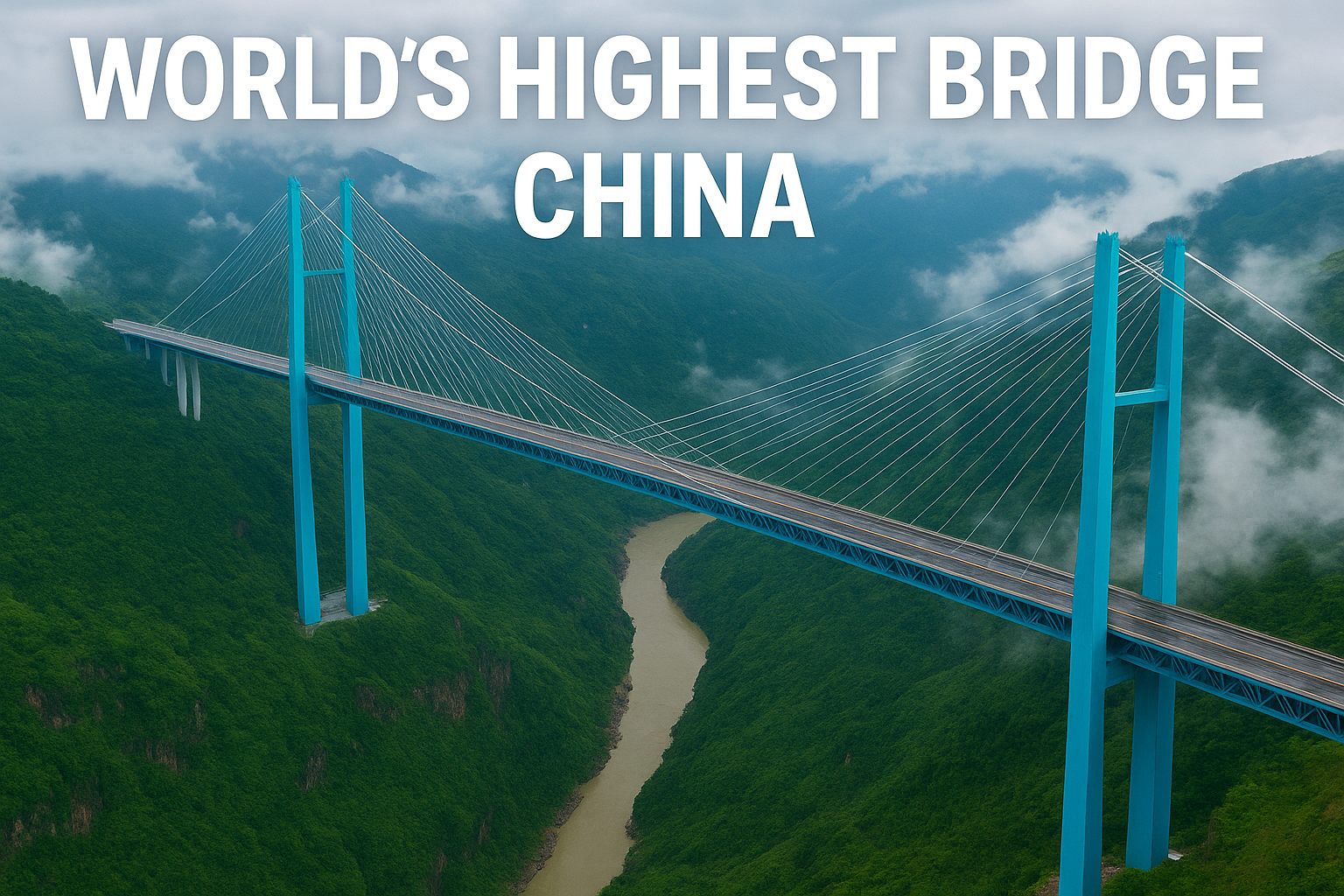
China has unveiled the world’s highest bridge, marking a landmark achievement in modern engineering and transportation. The Huajiang Grand Canyon Bridge, which towers 625 metres above a river and gorge, opened to traffic in the southern province of Guizhou. This development places the province once again at the forefront of bridge construction, as it already hosts the second highest bridge, the Beipanjiang Bridge, which stands at 565 metres.
The newly inaugurated bridge connects two rugged sections of Guizhou, a region well known for its mountainous terrain and deep valleys. The project took more than three years to complete and has quickly drawn global attention. Its 1,420-metre main span now holds the record for the world’s largest span bridge built in a mountainous area.
On the day of its opening, state media broadcast live drone footage showing vehicles traversing the immense structure, with its blue support towers dramatically emerging from the mist. Crowds of onlookers, engineers, and local officials gathered to witness the historic moment, many expressing pride and excitement in interviews with state media. The project has been hailed not only as a feat of engineering but also as a milestone for regional connectivity.
Officials from the provincial transport department explained that the bridge represents enormous progress for transportation in Guizhou. It is expected to significantly reduce travel time between the two sides of the Huajiang Grand Canyon. Journeys that once required more than two hours can now be completed in less than two minutes. This improvement is expected to inject fresh energy into the economic and social development of the province by facilitating easier movement of goods, services, and people.
Guizhou is a province that faces unique geographical challenges due to its hilly landscape. The need to overcome such obstacles has led to an impressive concentration of bridges. State news agency Xinhua has reported that nearly half of the world’s 100 highest bridges are located in Guizhou. With the completion of the Huajiang Grand Canyon Bridge, the province now hosts the two highest bridges on the planet, underscoring China’s determination to master the art of bridge construction in some of the world’s most demanding environments.
The structure is more than a transportation link. It represents the ambition of China to integrate even its most remote areas into the wider economy. By reducing travel times and creating safer passage across previously daunting terrain, the bridge opens new opportunities for tourism, trade, and cultural exchange. Local communities are expected to benefit from increased access to markets and resources that were once out of reach.
The project also reflects a broader trend in China’s infrastructure development strategy. By investing heavily in advanced engineering projects, the country aims to strengthen regional economies and improve the quality of life for its citizens. The Huajiang Grand Canyon Bridge is not only an example of technological innovation but also a symbol of the long-term vision driving China’s growth.
As vehicles now glide across the world’s highest bridge, the Huajiang Grand Canyon Bridge stands as a towering testament to human ingenuity and determination. Rising above the misty gorge of Guizhou, it links not only two points on a map but also the aspirations of a nation intent on bridging every divide created by nature.





















